Scoutmaster Musings
Archives:
2025 - Jan
2023 2022 2021 2020 2019 2018 2017 2016 2015 2014 2013 2012 2011 2010 2009 2008 2007 2006 2005
Vote - Support Citizenship


I just got back from walking 1/2 mile to my polling location and casting my ballot. Many of the positions were just the incumbent running for re-election unopposed. There was only one local referendum to vote on. It wasn't a really exciting election.
Modeling good citizenship isn't often an exciting role. As common citizens, our job is to vote and then support those people and policies we have elected and passed. Without the first step of voting, nothing else works out.
So, make it to the polls today if you haven't already - there's still time. Do your good turn of supporting our country by actively participating in the election process. And, maybe even get a cool little "I Voted" sticker to wear!
Scout On
| Leave Comment |
Posted: 16:06 11-04-2014 1136
No e-Cigs or Weed
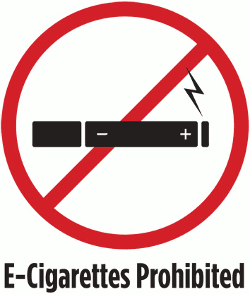
 Alcohol, Tobacco, and Drugs have not been allowed around youth in the BSA program for quite awhile. Recent technological and political changes have caused two items to be added to section IV of the Guide to Safe Scouting.
Alcohol, Tobacco, and Drugs have not been allowed around youth in the BSA program for quite awhile. Recent technological and political changes have caused two items to be added to section IV of the Guide to Safe Scouting.- electronic cigarettes: Adult leaders should support the attitude that they, as well as youth, are better off without tobacco in any form and may not allow the use of tobacco products at any BSA activity involving youth participants. This includes the use of electronic cigarettes, personal vaporizers, or electronic nicotine delivery systems that simulate tobacco smoking.
All Scouting functions, meetings, and activities should be conducted on a smoke-free basis, with smoking areas located away from all participants. - medical marijuana: It is unacceptable for anyone to use or be under the influence of medical marijuana at or during any Scouting activity.
Being ignorant of e-cigs, I just reviewed a bunch of online videos of them. Proponents say they are safe, clean, and help kick the smoking habit. Opponents say they promote a smoking lifestyle, deliver drugs and harmful chemicals to the body, and are not helpful in kicking smoking addiction.
My casual observer view is that they look like silly and are very expensive. Youth seeing adults using them could certainly be swayed to use them, too.
Scout On
| See 2 comments | Leave Comment |
Posted: 13:54 11-03-2014 1135
HikeGoo

Boo! It rhymes with Goo.
And, goo is the secret ingredient in HikeGoo foot treatment.
No one's going to want a tube of HikeGoo in their halloween bucket, but scouts working on the Hiking or Backpacking merit badges might be very thankful.
FootKinetics has four products to help your active feet - HikeGoo, RunGoo, WalkGoo, and SilkStep. They are all very similar, and they sent me a tube of HikeGoo to try out. So, I used it over the last month of hiking.
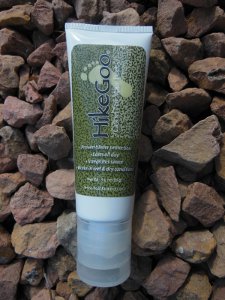
 Now, I seldom get blisters since I hike about 4 or 5 miles nearly every morning. My feet are used to the routine, my shoes and feet have developed a nice relationship, and the trail is well manicured. So, trying HikeGoo was more to see what it felt like and how it affected my feet.
Now, I seldom get blisters since I hike about 4 or 5 miles nearly every morning. My feet are used to the routine, my shoes and feet have developed a nice relationship, and the trail is well manicured. So, trying HikeGoo was more to see what it felt like and how it affected my feet.The thick wax is squeezed out of the tube directly onto the foot and smeared around with the applicator. I found the goo to take some effort to squeeze out, especially these last few cold days, but it then spread around just fine. I found it worked to spread the goo with a couple fingers to get a thinner, even layer. I then pulled/rolled my socks over my feet so the goo stays in place better.
After my short Appalachian Trail hike in August, I had quite a bit of rough, flaking skin on my heels and around the edge of my soles. The biggest thing I noticed about using HikeGoo this past month is that it really smoothed that skin and made my feet feel better. I was concerned that the wax cream might make my feet perspire more, but that did not happen. My feet and socks were just as dry as normal, and my socks did not get caked with goo after a morning of hiking.
I can really see how this cream could help someone prone to blisters, especially scouts with little hiking experience or just starting to prepare for Philmont or some other long trek. Here are a few things I particularly noticed about HikeGoo:
- Odorless and Colorless - no perfumes or pigmentation, just smooth white waxy protection
- Creamy - I guess you'd expect that from a foot cream, but it isn't greasy and it felt nice
- Packaging - You can carry a 3oz. or 5.5oz. tube. The package adds another ounce, most of that is the 0.6oz. applicator lid. On a backpacking trek, I'd replace with a simple lid.
- Slippery - I could certainly feel the smooth glide rather than rubbing on my feet
With the cold and dry air invading Minnesota now, I've found that the extra HikeGoo left on my fingers after applying is useful. I massage it into my hands and they don't feel so dry and chapped after being outside for hours. Maybe FootKinetics will come out with HandGoo next. :-)
Scout On
| Leave Comment |
Posted: 11:37 10-31-2014 1134
Campfire Doughy Maker
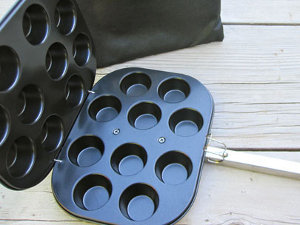
Few Scouts don't enjoy a campfire and even fewer dislike cooking over one. I wonder how many marshmallows have been roasted by scouts this past summer? Poking food on a stick, wrapping it in tin foil, or tossing it on a grate have been the main ways to cook over fire.
Now there's a new, easy way to cook campfire treats - the Doughy Maker. It's basically two muffin tins hinged together with an extendable handle. This gadget design is good for a few reasons:
- Keeps ingredients together - no burning marshmallows flying through the air
- Keeps hands well away from hot coals
- Ten individual snacks cooked all at once, very quickly
- Easy to load, empty, and load again
One Doughy Maker creates 10 doughies per batch, so it's perfect for a patrol. It's real cooking, too - not just heating a hotdog or cheese sandwich.
It takes about 5 minutes per batch so scouts in a rush for a fast lunch can still have hot food. Making a second, third, or fourth batch is simple so using up leftover ingredients isn't a problem.
There's no end to what can be made with this fun little cooker over the campfire. Use your imagination to come up with more, but here's a few to get you started:
- Mini Pie - scoop of canned pie filling inside dough
- Cheeseburger Popper - scoop of cooked hamburger and piece of cheese inside dough
- Cinnabun - cinnamon and sugar inside dough
- S'mores - chocolate chips and mini-marshmallows inside dough
- Peanut Butter Cup - chocolate and peanut butter chips inside dough
- Pizza - sauce, cheese, chopped pepperoni inside dough
Refrigerated dough is the simplest to use, but bread dough and cookie dough you make yourself work great and save money. As long as it isn't runny batter, such as pancakes and cake, it's worth giving a try.
Check out the Doughy Maker website to find out how inexpensive it could be for your Pack or Troop to have a few of these cookers on hand for future campouts.
Scout On
(I received this product to try out and review)
| See 1 comment | Leave Comment |
Posted: 9:51 10-27-2014 1133
University of Scouting
 I'm at University of Scouting today. My LNT presentation went well but I missed this Great dutch oven cooking session. :-(
The fella doing this session is fun, and was in a first aid training I did a couple years ago. UofS is a nice opportunity to reconnect with other scouters in your council.
Scout On
I'm at University of Scouting today. My LNT presentation went well but I missed this Great dutch oven cooking session. :-(
The fella doing this session is fun, and was in a first aid training I did a couple years ago. UofS is a nice opportunity to reconnect with other scouters in your council.
Scout On| Leave Comment |
Posted: 14:38 10-25-2014 1132
SansBug Photo Contest
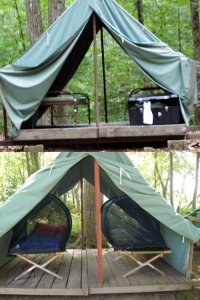

One of these tents is not like the other - can you tell the main difference?
Canvas tents are an old stand-by of Scout Camps across the country. I've stayed in them at Philmont basecamp on both of my treks there. In a dry, arid environment, they work well, but there is absolutely no protection from insects while trying to sleep.
Notice the netting on the cots in the lower picture? Frequent readers may recall my post about SansBug shelters this past spring. It is a very cool, very fun, protection from all form of bug, insect, creepy critter, and crawly rodent while you're down for the night.
Anyway, I've been chatting with Fayaz at SansBug and they've got great plans for the next year!
Right now, they are holding their First Annual Photo Contest just for Scouts to show off their SansBugs in use at camp or on campouts. Each scouting unit can contribute ONE photo for a chance to win.
And, exactly what can you win? Whoa! You've really got to check out that Photo Contest link to find out. It's a lot more than you expect, for sure, but I will tell you there is a grand prize and 9 runners-up. You'd better not wait because the short deadline for this first contest is November 30.
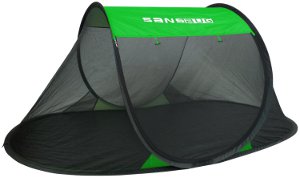

But, what can you do if you don't have a SansBug shelter yet? You certainly can't take a photo of it, but you can win one! Fayaz says I can give away a SansBug every month in the Boy Scout Trail drawing. So, starting next month, yet another prize will be added for you loyal visitors.
Hmmm, seems to me an enterprising Scout Camp might get a bunch of these and sell or rent them at their Trading Post for those scouts that came not quite so Prepared.
Scout On
| See 1 comment | Leave Comment |
Posted: 12:39 10-24-2014 1131
Perfect Eagle Project?
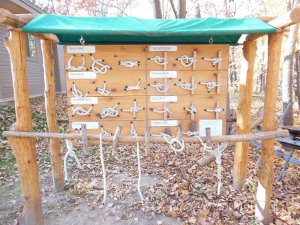
 (click pic for larger view)
(click pic for larger view)On my afternoon hike this weekend, I ran into what very well may be the perfect Eagle Scout service project!
This is a hands-on Knots and Lashings kiosk and can be found at Lowry Nature Center west of Victoria, MN. It was done as the Eagle project of Joshua R. from Troop 589 in December, 2012.
The front side of the kiosk has eight examples of knots displayed in 3 physical steps, along with a bit of text about the knot. The square knot, sheet bend, rosendahl bend, bowline, two half-hitches, taut-line hitch, clove hitch, and timber hitch are shown. (Yeah, me too - rosendahl bend??? it's also called the zeppelin bend)
In front of this oversized knot board is a lashing rail with attached ropes and short poles so visitors can actually practice the knots.
So, why do I like this project so much?
- It interacts with the public. People get to DO something with it, not just sit on it, or walk on it, or look at it.
- It teaches useful skills. Whether a grandpa remembering that old knot, or a young girl trying to tie one for the first time, visitors can explore and succeed in just a few minutes
- It promotes Scouting. Knot-tying is an obvious Scout thing, but this doesn't have BSA branding all over it. One placard tells that it is an Eagle project. A great way to show young boys and their parents another reason for them to get into Scouting.

 (click pic for larger view)
(click pic for larger view)The back of the kiosk has 4-step displays of the square, diagonal, shear, and round lashings. Another lashing rail with attached poles allows these lashings to be tried, but it appears that the ropes have walked away.
Finally, a small section of display space shows and explains various kinds of material and styles used in rope making.
I really liked the rough log supports and natural colors of this project. It fits into the outdoor area perfectly and is right along a trail so visitors can check it out before or after a short hike.
So, what do you think? The best project ever?
Have you seen an awesome project, too? Leave a comment about it.
If you are interested in duplicating this project, you might try contacting the troop at www.troop589.org
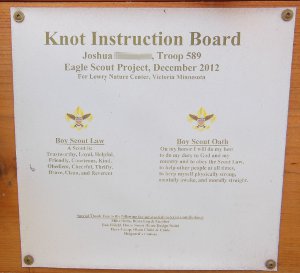
Scout On
| See 5 comments | Leave Comment |
Posted: 10:42 10-22-2014 1126
Hip Patrol Patches


If scouts in your troop or Webelos den are tired of the same old choices in official BSA patrol emblems, have them take a peak at ScoutStuff.org patrol emblems where they may find something new and fun.
Maybe the BSA will regain some of the market lost to custom patrol patch manufacturers with these new patrol options. Some are just redesigns of older versions, like the Native American and Bison patches. Others strike me as silly, such as the Computer Geek and Game Master patches. And a few, Raven, Knight, Bull, look pretty cool to me.
If you want to just see all the current patrol patches, from Aliens to Zombies, check out my Patrol Patches page.


Yes, that's right Aliens and Zombies, not the good ol' Antelope and Roadrunner - those are no longer listed at scoutstuff.org
So, what do you think?
Good move to offer more choices, or not?
Do you have a favorite patrol patch from the list?
Scout On
| Leave Comment |
Posted: 16:01 10-20-2014 1125
Twisted Dogs
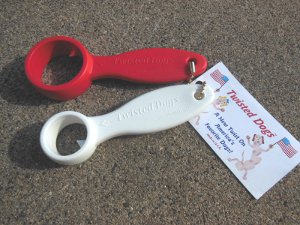 Do your scouts ever cook hotdogs?
Do your scouts ever cook hotdogs?Here's a new way - it's called the Twisted Dog.
Hotdogs and brats are all-American summer food seen around countless campfires and 4th of July family gatherings. They are an easy introduction to campfire cooking for Cub Scouts, and a simple, quick meal for older scouts (even though there's not much real cooking prowese required).
Earlier this summer, I chatted with a fellow that has invented a new item to make this old picnic stand-by a bit better. The Twisted Dog is a simple tool to make a spiral cut down the hotdog. Why, pray tell, would you want a spiral cut hotdog? Well, for a few reasons...
- Even Cooking - the hotdog stays straight instead of bending around when cooking. It also heats up inside more quickly.
- Better Taste - the exposed cuts and edges let juices escape and sear, improving the flavor.
- Condiment Adhesion - there's more area for the ketchup, mustard, and relish to hold in place rather than squirt onto your lap.
- More Filling - spiral cut dogs remain longer than a regular dog, filling the hotdog bun better from end to end.
- Faster Cooking - scout testing has shown the hotdogs cook a bit faster so they get to eat sooner.
This summer, I gave Twisted Dogs to a scout patrol to try out. At last check, they are still using them whenever they do a simple hotdog meal. The scout feedback has been that it keeps the hot dog more evenly cooked, cooks faster, and new scouts like the novelty. They've kept the Twisted Dog in their patrol box and use it whenever they do dogs.

If your troop is looking for a new fundraising opportunity, contact Scott at TwistedDogs.net and ask for more information. If your troop runs any sort of booth or stand at a community gathering, these could be a great add-on item to offer.
Scout On
| Leave Comment |
Posted: 15:38 10-13-2014 1123
SPOT Special
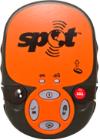
 Our troop started carrying a SPOT Messenger on high adventures about seven years ago. A SPOT is a satellite pinging device that can be used to request aid in an emergency. Parents felt much more comfortable knowing this extra bit of safety was along on each trek.
Our troop started carrying a SPOT Messenger on high adventures about seven years ago. A SPOT is a satellite pinging device that can be used to request aid in an emergency. Parents felt much more comfortable knowing this extra bit of safety was along on each trek.It allowed us to touch base with parents every morning and evening. We would send a "Starting Now" email to a mail list address when we hit the trail each morning. When we stopped at camp, another "In Camp" message was sent. Every interested person that asked to be on the mail list received these messages each day.
We also use the tracking ability of the SPOT to ping a satellite about every 15 minutes. At the end of the day, families could view a satellite map online and see where the crew had traveled that day. A pleasant surprise we discovered was that the real-time tracking function of the SPOT was a big hit with families left at home. Mom could virtually watch as her son moved across the Philmont terrain or paddled through the Boundary Waters.
I also carry my own SPOT with me on all my long hikes and backpacking trips. At the end of the trek, I have a map of my adventure and I can add geotagged pictures to my online adventure. Here is an example trek.
Even if you buy a SPOT and use it just once for a Philmont trek, it adds less than $25 to each participant cost. When used on other troop-planned adventures, the distributed cost is negligible. The annual fee is $150 and it is not too difficult to find a very good deal on the device - I got mine free just before Christmas!
Here is a way you can save 20% ($30) off an annual service plan ...
- Purchase a SPOT device - locally at REI, Cabellas, Gander Mountain, Bass Pro Shops, EMS, Sportsman Warehouse, or online at their web sites, or wherever you can get a good deal.
- Activate your SPOT device with whatever rescue and tracking options you want.
- Visit Referral Page and enter your Name and SPOT ESN to receive 20% off your next annual service plan.
By referring you, I also receive a discount on my next annual service plan, so we both win!
If you have questions about the SPOT GPS Messenger, I have been using one for 8 years and would be happy to answer them.
Scout On Safely
| See 2 comments | Leave Comment |
Posted: 11:02 10-09-2014 1122
Philmont Prep

 Next month (November) will be the annual Philmont registration lottery when many thousands of units will sign up for a few thousand 2016 treks. Best of luck to you all!
Next month (November) will be the annual Philmont registration lottery when many thousands of units will sign up for a few thousand 2016 treks. Best of luck to you all!If your troop or crew is already accepted for a trek next summer in 2015, then you won't be participating in that lottery, but you should be participating in lots of pre-Philmont preparation this winter. Philmont supplies you with lots of literature and preparation advice. Their planning calendar page is a good overview.
There are a few areas that are easy to overlook, put off, or skimp on - resulting in a less-than-wonderful trek, or no trek at all. Over the next seven months, make sure your crew considers and completes everything required by Philmont, plus items that will just make your trek a better experience.
- Training - This past spring, I presented Red Cross Wilderness First Aid training to a crew just two days before they left for Sea Base. They had overlooked the fact that no one had current certification and the BSA is adamant about having at least TWO members of each high adventure crew currently certified in Wilderness First Aid and two currently certified in CPR. This crew was lucky that I was available on short notice. Wilderness First Aid training is often difficult to find, so get your two people going now, not next spring.
Youth Protection Training and Hazardous Weather training are also required. You may need other training, depending on what activities you plan to do.
And, you may not know it, but every adult participant must be a registered BSA member so get those adults signed up. - Tour Plan - Depending on your council, it may take a month or more to approve your tour plan after you finally get it correctly entered into MyScouting.org The process of gathering all the required information from various families can take many days. This information includes vehicle data, insurance, leader training, and travel itinerary. If it's not complete enough, and within the BSA parameters, your tour plan will be rejected and you can try again. and again. and again.
- Physical Conditioning - Of the hundreds of Scouters I've asked, by far the main thing they wish they would have done differently for Philmont was more backpacking practice before the trek. We are so busy that setting aside an hour a day and two hours on a weekend day just doesn't fit in many schedules. Without that conditioning of feet, legs, heart, lungs, and back, you are destined to a grueling 10 days on the trail. Many scouts are already active with athletics, marching band, and other extra-curricular activities, but those that are sedentary will drag down the entire crew.
At least three months before the trek date, regular hiking and other aerobic activities should be set up and tracked for the crew. The crews I participated on had three hikes every week and crew members had a minimum expected number of miles they were to cover before the trek. That worked well for us. - Equipment Use - Purchasing new water filters, stoves, and tents just before your trek is not wise. Hitting the trail with new gear that is unfamiliar to the crew is a recipe for expensive mistakes and a terrible time. Acquire gear well before the trek and ensure everyone knows how to use, and has practiced with it, and has demonstrated their skill with it. This practice can be done at troop meetings or special trek crew gatherings.
- Teamwork - Being a trek crew leader is a great opportunity for one scout to lead. He will have a distinct role at Philmont and staff members will address him directly rather than the adults in the crew. I just loved this on my Philmont treks! It really helps if you can get him used to that role of leading this small group of peers and adults before the trek begins. Actually, getting this group to work together as a team is just as important. Defining, and communicating, what is expected of the adults is a critical pre-trek activity, too.
Planning, and requiring participation in, some practice camp-outs using the gear for the trek works great. Have the scouts determine a location, route, and schedule for a couple 2-day or 3-day backpacking trips in the months before Philmont.
Each crew will have a couple other specific roles to be filled. The Chaplain's Aide promotes daily devotions and the "Duty to God" patch. The Wilderness Guia promotes the Leave No Trace principles and Philmont Wilderness Pledge within the crew and helps the crew follow them.
I feel it's also a good idea to ensure every scout realizes he will be expected to perform all tasks at some point in the trek, including navigating, cooking, and cleaning. - Merit Badges - Philmont recommends scouts have completed Backpacking, Camping, Climbing, Cooking, First Aid, Orienteering, Hiking, Nature, and Wilderness Survival before their trek so they are skilled in the tasks they will face. Philmont isn't really a place to learn the skills, but is an opportunity to use them. A fun 60-mile trek can become a frustrating 80-mile trek with poor navigation skills. The preparatory backpacking trips can be great for these, but if some scouts have not completed them, Philmont provides many miles and days to fulfill the requirements. Doing merit badges on a trek can be difficult with most of the day full of hiking and program, but Astronomy, Weather, and Wood Carving could be considered.
Seasoned Philmont Folks - Do you have other advice to pass on to Philmont first-timers?
Scout On
| Leave Comment |
Posted: 15:36 10-08-2014 1121
Top 10 Life Skills Merit Badges


Fulfilling the vision of the BSA to prepare scouts as responsible, participating citizens and leaders is a real challenge. A responsible citizen can take care of himself, his property, and his family. Very few of the boys I've met in Scouting came with a built-in sense of responsibility and none have had an innate ability to fix any problem. In this affluent area where I live, many boys I've dealt with have been protected at home to the extent they are ill-prepared for most any challenge that might rise against them. They are often also under the impression that parents will rescue them from any situation.
Through the outdoors program of Scouting, these scouts receive lots of opportunity to practice and improve their self-sufficiency skills. They learn to plan, prepare, and participate in order to achieve goals, overcome obstacles, and lead others. The patrol and troop program provides a focused agenda - scout skills and leadership - but does not provide much in the way of real life skills.
That's where the merit badge program comes into play. The dozens of merit badge topics allow a scout to try out new things, expand his interests, and possibly develop a career direction. Some merit badge topics are recreational, others are career-oriented, an others are life skills.
To reach the Eagle rank, each scout needs to complete these merit badges: Camping, Citizenship in the Community, Nation, and World, Communication, Cooking, Cycling or Hiking or Swimming, Emergency Preparedness or Lifesaving, Environmental Science or Sustainability, Family Life, First Aid, Personal Fitness, Personal Management
After that, it's up to him to choose merit badges that interest him. All too often, the badges are done because they are being offered at troop meetings, or at summer camp, or merit badge fair, rather than because they sound interesting to the scout. It's better for the scout to review the topics and choose those he wants.
If I could recommend merit badges with the most useful skills that will most likely help the scout as he leaves home, lives on his own, and starts a family, this would be my list:
- Astronomy - gets the scout in touch with his universe. A little knowledge of constellations, planets, moon, and sun helps with seasons, time, and direction.
- Automotive Maintenance - knowing more than where to stick the gas and the key can save hundreds of dollars and keep a car running many more years. The scout might also recognize and troubleshoot roadside problems.
- Electricity - with electric power in every home, understanding how it works and what might go wrong is good stuff.
- Genealogy - as a young person goes out on their own, a strong tie to family provides support. By recognizing your place in your family's history, and being aware of that history, a sense of belonging helps when loneliness sets in.
- Home Repairs - I think this one is obvious! No scout should ever need to call on a Handyman service to make small repairs around his home or apartment.
- Pets - provides practice in caring for helpless beings that rely completely on you for life. Many scouts will have pets when they are adults, and it's good practice for kids as well.
- Plumbing - have you seen the price of plumbing repairs? Everyone will have broken pipes, replaced hot water heater, or leaking faucets, sinks, or toilets at some point. This also gets the scout more aware of how a house works.
- Sustainability - Yes, it's an optional Eagle-required badge but, if the scout does Environmental Science, he should do this one as well. Energy conservation and sustainable practices will only continue to become more important and more commonplace. An awareness of ways to reduce, reuse, recycle, and sustain the planet is expected of everyone.
- Traffic Safety - Too many youth still die in vehicles. Since most scouts drive, there's no reason they shouldn't complete this badge. It's yet another review of being a safe driver, and every review helps.
- Weather - Awareness of developing weather can be a life-saving skill as well as protecting property from damage.
OK, since Sustainability is on the Eagle-required list, which merit badge should be listed instead?
Scout On
| See 4 comments | Leave Comment |
Posted: 9:15 10-01-2014 1118
Previous PostsComments:
Feb 25, 2023 - Joe Patterson
Just out of curiosity, are the Rockwell paintings on exhibit anywhere
Mar 16, 2023 - Adam John
Great question Joe! Have you checked out the Norman Rockwell Museum in
Stockbridge MA? (nrm.org) There is also the Rockwell Museum in Corning
NY. (rockwellmuseum.org) I believe the latter has more art. Hope this
helps!
Jan 21, 2024 - Johnna Downing
The Scouting museum at Philmont, Cimmaron, NM hopefully has the ones that
used to hang at the museum in Irving, TX. Good luck. Johnna
Comment or Question about this page:
Scouting 2025 - Ask a Question - Add Content
Just for Fun: Socializing merit badge




This site is not officially associated with Scouting America
Find more Scouting Resources at www.BoyScoutTrail.com



Follow Me, Scouts
Recent Comments